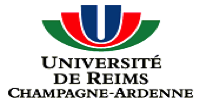Textile-based technology system for
monitoring patients affected by arterial disease
Partners in the project
Part of the funding for the ASTICO project comes from the Champagne Ardenne Regional Council under its Emergence Programme. Work on the project began on 1st October 2012 for a 36-month period. It is being led by the French Textile and Apparel Institute (IFTH), and includes MADoPA, the University of Technology of Troyes (UTT), the University of Reims Champagne Ardenne (URCA), the University of Burgundy (UB), and Vigimedis, a telehealthcare company.
 |
 |
 |
 |
 |
 |
 |
Project content
The aim of the project is to develop a comfortable, easy to use and acceptable textile material into which functions for monitoring the treatment of peripheral arterial occlusive disease can be integrated. This will enable changes in the patient’s behaviour to be assessed and allow information useful to both the patient and the medical profession to be extracted.
The project is structured into five areas of work:
- Specifying potentially detectable indicators of frailty (psychological and medical approach).
- Determining the criteria that make the use of smart textiles acceptable.
- Developing an intelligent textile material (second skin mesh structure) with a built-in network of interconnected sensors and actuators with embedded intelligence. This material has to meet a certain number of wearability and washing/cleaning requirements, and if it is to be accepted by the wearer, must be reliable and comfortable (for example, skin sensitivity to pressure, allergies, etc. must be considered). The network of sensors must enable reliable measurement of the selected indicators and contain a microcontroller simulating intelligence.
- Developing a microcontroller used to collect and store information and to process that information in a simple way.
- In situ evaluation of the developed solution.
MADoPA’s role
MADoPA is contributing its two main areas of expertise to the project:
- identification of frailty criteria that might be added to the scope of the existing system of monitoring patients suffering from arterial disease.
- social and ethnographic evaluation of the acceptance and use of the textile solution by individuals at home.